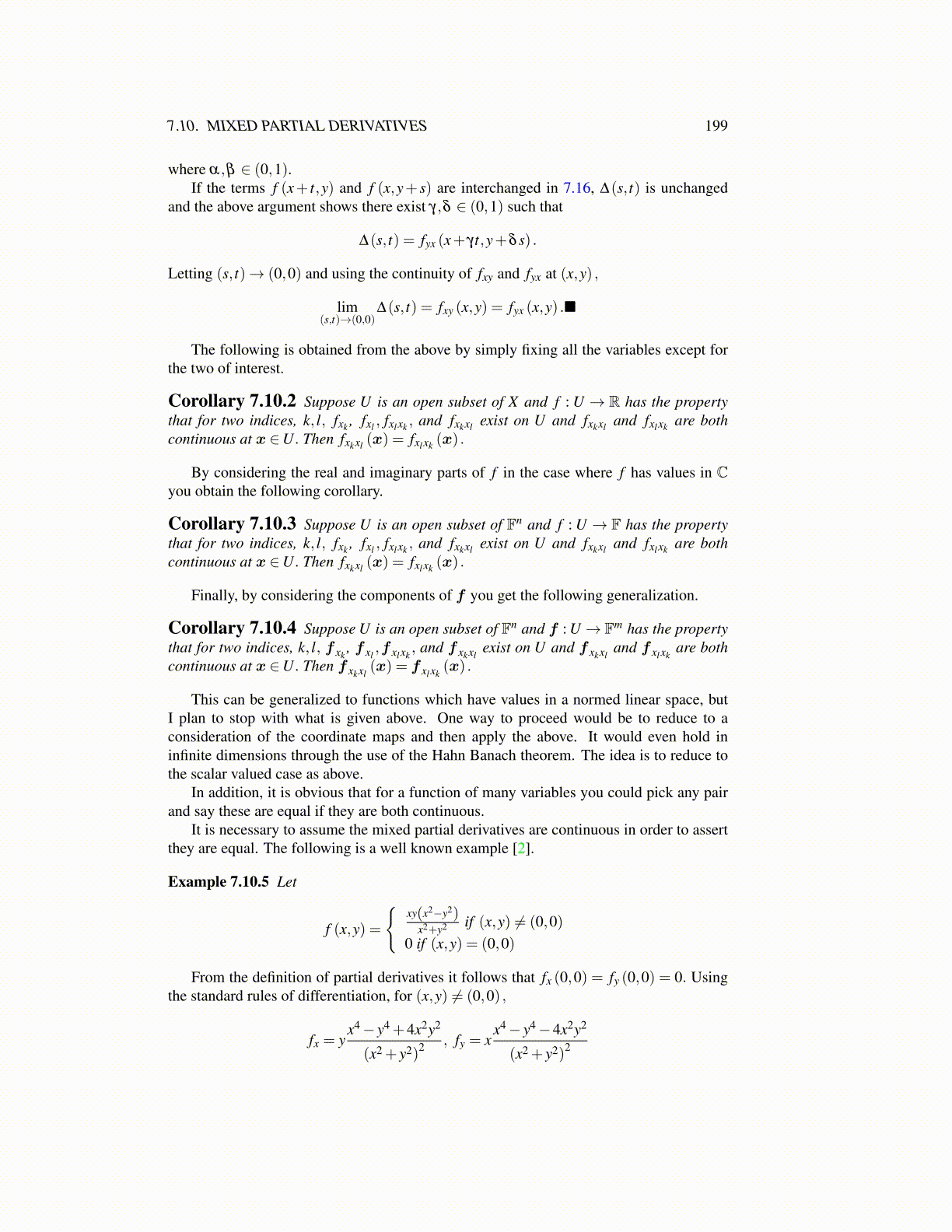
7.10. MIXED PARTIAL DERIVATIVES 199
where α,β ∈ (0,1).If the terms f (x+ t,y) and f (x,y+ s) are interchanged in 7.16, ∆(s, t) is unchanged
and the above argument shows there exist γ,δ ∈ (0,1) such that
∆(s, t) = fyx (x+ γt,y+δ s) .
Letting (s, t)→ (0,0) and using the continuity of fxy and fyx at (x,y) ,
lim(s,t)→(0,0)
∆(s, t) = fxy (x,y) = fyx (x,y) .■
The following is obtained from the above by simply fixing all the variables except forthe two of interest.
Corollary 7.10.2 Suppose U is an open subset of X and f : U → R has the propertythat for two indices, k, l, fxk , fxl , fxlxk , and fxkxl exist on U and fxkxl and fxlxk are bothcontinuous at x ∈U. Then fxkxl (x) = fxlxk (x) .
By considering the real and imaginary parts of f in the case where f has values in Cyou obtain the following corollary.
Corollary 7.10.3 Suppose U is an open subset of Fn and f : U → F has the propertythat for two indices, k, l, fxk , fxl , fxlxk , and fxkxl exist on U and fxkxl and fxlxk are bothcontinuous at x ∈U. Then fxkxl (x) = fxlxk (x) .
Finally, by considering the components of f you get the following generalization.
Corollary 7.10.4 Suppose U is an open subset of Fn and f : U → Fm has the propertythat for two indices, k, l, f xk
, f xl,f xlxk
, and f xkxlexist on U and f xkxl
and f xlxkare both
continuous at x ∈U. Then f xkxl(x) = f xlxk
(x) .
This can be generalized to functions which have values in a normed linear space, butI plan to stop with what is given above. One way to proceed would be to reduce to aconsideration of the coordinate maps and then apply the above. It would even hold ininfinite dimensions through the use of the Hahn Banach theorem. The idea is to reduce tothe scalar valued case as above.
In addition, it is obvious that for a function of many variables you could pick any pairand say these are equal if they are both continuous.
It is necessary to assume the mixed partial derivatives are continuous in order to assertthey are equal. The following is a well known example [2].
Example 7.10.5 Let
f (x,y) =
{xy(x2−y2)
x2+y2 if (x,y) ̸= (0,0)0 if (x,y) = (0,0)
From the definition of partial derivatives it follows that fx (0,0) = fy (0,0) = 0. Usingthe standard rules of differentiation, for (x,y) ̸= (0,0) ,
fx = yx4− y4 +4x2y2
(x2 + y2)2 , fy = xx4− y4−4x2y2
(x2 + y2)2